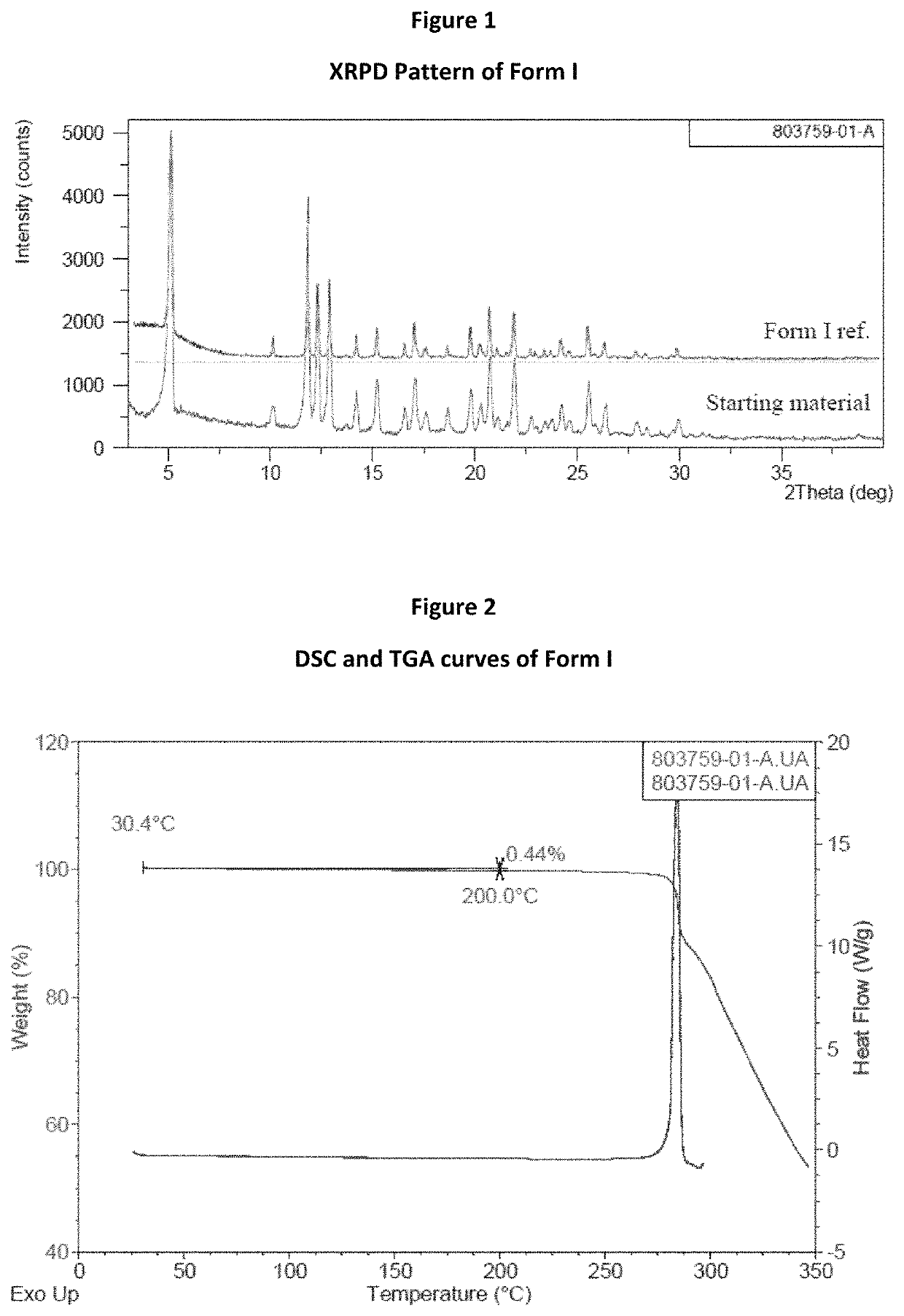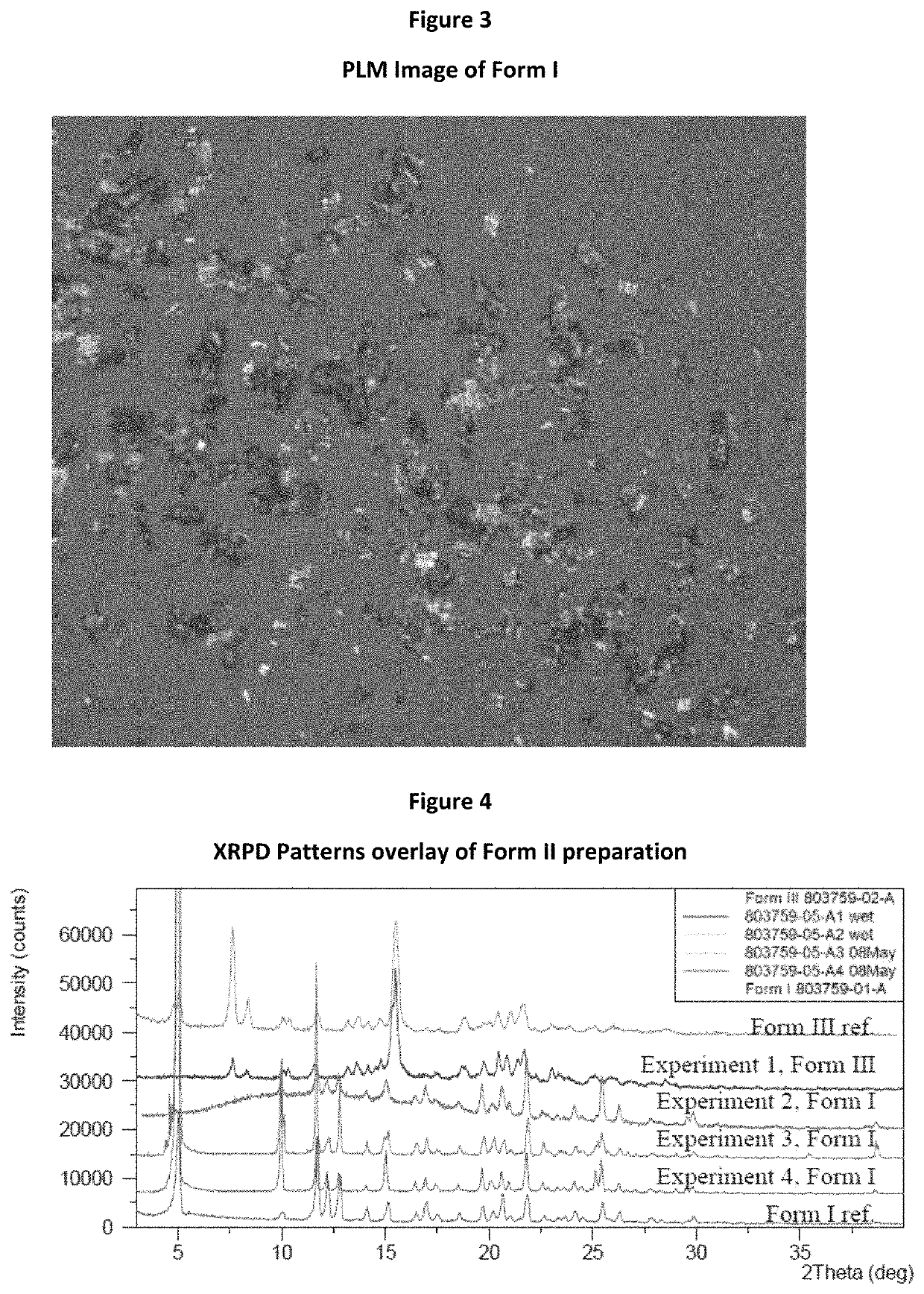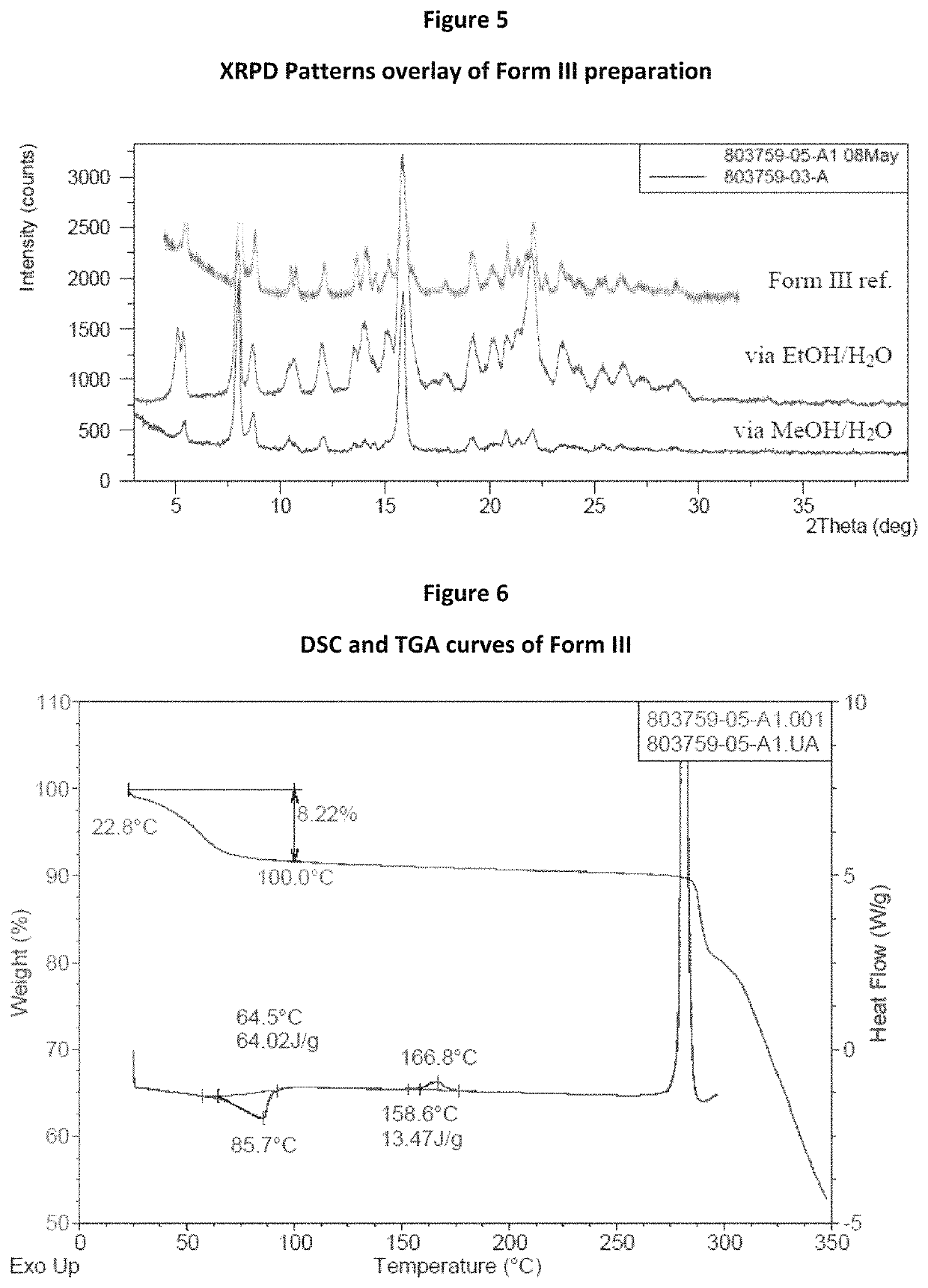Crystalline form of tegavivint, method of preparation, and use thereof
a technology of tegavivint and crystalline form, which is applied in the field of crystalline form of tegavivint, can solve the problems of unfavorable particle morphology during long-term storage of formulated drugs, complex challenges for the development of new therapies, and increase in large particle count, so as to enhance the stability of the suspension and reduce the chance of getting any unmilled larger crystals
- Summary
- Abstract
- Description
- Claims
- Application Information
AI Technical Summary
Benefits of technology
Problems solved by technology
Method used
Image
Examples
example 1
Investigation of Form I of Tegavivint
[0098]This Example illustrates the investigation of Form I of tegavivint.
[0099]Starting material (Form I of tegavivint) was characterized by XRPD, TGA, DSC and PLM. XRPD pattern displayed in FIG. 1 showed the starting material was crystalline and confirmed to be Form I. TGA and DSC curves are displayed in FIG. 2. A weight loss of 0.4% up to 150° C. was observed on TGA curve, and DSC result showed no melting endotherm before decomposition. Based on the characterization results, Form I was speculated to be an anhydrate. PLM image displayed in FIG. 3 showed irregular fine particles with partial aggregation for Form I sample.
example 2
Preparation of Form II of Tegavivint
[0100]Attempts to prepare Form II of tegavivint were performed in four conditions. The detailed results are shown in FIG. 4 and Table 1. The results suggested that Form II was quite challenging to be re-prepared or metastable.
[0101]
TABLE 1Summary of Form II Preparation AttemptsAnti-solvent,IDMethodSolvent, mLmLResults803759-05-A1Anti-solventEtOH, 2.5H2O, 2Form IIIaddition803759-05-A2Anti-solventEtOH, 2.5H2O, 2Form Iaddition803759-05-A3Solution vaporEtOH, 2H2OForm Idiffusion803759-05-A4SlowEtOH, 2n-heptane, 2Form Ievaporation
example 3
Preparation of Form III of Tegavivint
[0102]Form III samples (803759-03-A and 803759-05-A1) were prepared via anti-solvent addition in MeOH / H2O and EtOH / H2O systems, and the XRPD results are displayed in FIG. 5. The TGA / DSC results of Form III (803759-05-A1) are displayed in FIG. 6. A weight loss of 8.2% up to 100° C. was observed on TGA. One endotherm at 64.5° C. and one exotherm at 158.6° C. were observed before decomposition on DSC. The PLM image displayed in FIG. 7 showed needle-like and fine particles with aggregation for Form III sample (803759-05-A1).
[0103]Since Form III samples could be obtained from different solvent systems and converted to Form IV after vacuum drying at RT or Form V after exposure to ambient condition at RT (FIG. 8), Form III might be isomorphic.
PUM
| Property | Measurement | Unit |
|---|---|---|
| temperature | aaaaa | aaaaa |
| temperature | aaaaa | aaaaa |
| 2θ | aaaaa | aaaaa |
Abstract
Description
Claims
Application Information
 Login to View More
Login to View More - R&D
- Intellectual Property
- Life Sciences
- Materials
- Tech Scout
- Unparalleled Data Quality
- Higher Quality Content
- 60% Fewer Hallucinations
Browse by: Latest US Patents, China's latest patents, Technical Efficacy Thesaurus, Application Domain, Technology Topic, Popular Technical Reports.
© 2025 PatSnap. All rights reserved.Legal|Privacy policy|Modern Slavery Act Transparency Statement|Sitemap|About US| Contact US: help@patsnap.com



